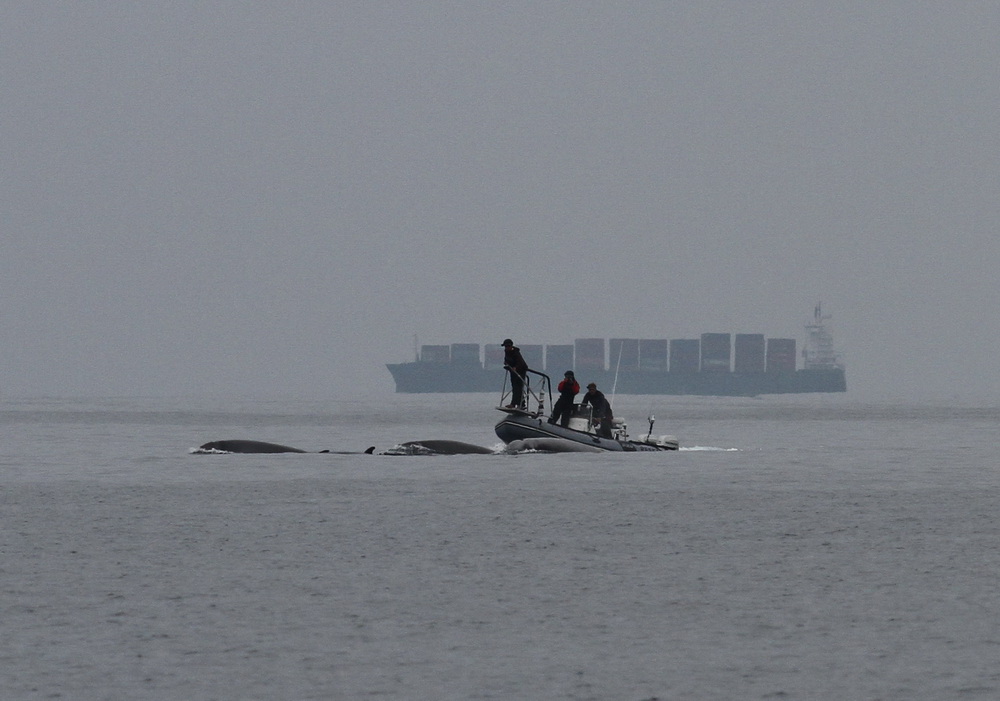SOCAL-BRS (Southern California Behavioral Response Study) is a multi-year effort (2010-2015) designed to better understand marine mammal behavior and reactions to sound. The overall objective is to provide a better scientific basis for estimating risk and minimizing effects of active sonar for the U.S. Navy and regulatory agencies. SOCAL-BRS is also part of a larger international collaboration to measure the impacts of noise on marine mammals using opportunistic and experimental approaches (including controlled exposure experiments, or CEEs). It represents a collaboration among scientists from Cascadia Research, Southall Environmental Associations, University of St Andrews, Woods Hole Oceanographic Institution, Duke University, and others as well as the U.S. National Oceanic and Atmospheric Administration (NOAA), and U.S. Navy researchers and operational personnel. It is jointly funded by the U. S. Navy, Chief of Naval Operations, Environmental Readiness Division (OPNAV N45) and the Office of Naval Research (ONR). See http://sea-inc.net/socal-brs/ for additional information on the SOCAL-BRS.
Cascadia Research personnel John Calambokidis (Co-PI of the project), Annie Douglas, Erin Falcone, Greg Schorr, Jeremy Goldbogen, and Jeff Foster are key members of the SOCAL-BRS team. Cascadia’s role includes providing the majority of the personnel for the study (including for visual observations, small boat operations, and tagging), vessel charters, and small boats for tag deployments and focal follows. Dr. Brandon Southall of SEA serves as Chief Scientist for the SOCAL-BRS.


Publications
This collaborative study of cetacean response to mid-frequency sonar is currently underway (see web site on SOCAL-BRS) but has already come out with some important publications. Two publications on the results from the SOCAL BRS released in 2014 were:
Goldbogen, J.A., A.K.. Stimpert, S.L. DeRuiter, J. Calambokidis, A.S. Friedlaender, G.S. Schorr, D.J. Moretti, P.L. Tyack, and B.L. Southall. 2014. Using accelerometers to determine the calling behavior of tagged baleen whales. The Journal of Experimental Biology 217: 1-7. doi:10.1242/jeb.103259
Friedlaender,A.S., J.A. Goldbogen, E.L. Hazen, J. Calambokidis, and B.L. Southall. 2014. Feeding performance of sympatric blue and fin whales exploiting a common prey resource. Marine Mammal Science DOI: 10.111/mms.12134
Publications on the first measured responses of baleen whales and also Cuvier’s beaked whales to mid-frequency sonar published in 2013 were :
DeRuiter, S.L., B.L. Southall, J. Calambokidis, W.M.X. Zimmer, D. Sadykova, E.A. Falcone, A.S. Friedlaender, J.E. Joseph, D. Moretti, G.S. Schorr, L. Thomas, and P.L. Tyack. 2013. First direct measurements of behavioural responses by Cuvier’s beaked whales to mid-frequency active sonar. BiologyLetters 9: 20130223. http://dx.doi.org/10.1098/rsbl.2013.0223
Goldbogen, J.A., B.L. Southall, S.L. DeRuiter, J. Calambokidis, A.S. Friedlaender, E.L. Hazen, E.A. Falcone, G.S. Schorr, A. Douglas, D.J. Moretti, C. Kyburg, M.F. McKenna, and P.L. Tyack. 2013. Blue whales respond to simulated mid-frequency military sonar. Proceedings of the Royal Society B.280: 20130657. http://dx.doi.org/10.1098/rspb.2013.0657
Also see past publication on SOCAL-BRS methods:
Southall, B.L., D. Moretti, B. Abraham, J. Calambokidis, S.L. DeRuiter, and P.L. Tyack. 2012. Marine Mammal Behavioral Response Studies in Southern California: Advances in Technology and Experimental Methods. Marine Technology Society Journal 46(4): 46-59.